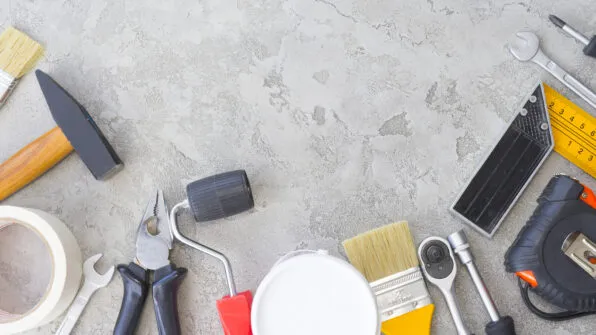Late payments are a daily pain for home services businesses – but they’re also a strategic opportunity for embedded finance in home services platforms.
For plumbers, HVAC technicians, electricians, landscapers, and cleaners, getting paid late isn’t just frustrating. It’s a constant source of stress that limits their ability to grow, reinvest, or even stay afloat. And while the platforms they rely on are getting better at scheduling, quoting, and project management, they’re still falling short where it matters most: cash flow.
Late payments are a solvable problem. But only if you treat them not as a back-office nuisance, but as a core product issue – one that your platform is in a perfect position to address.
The Late Payment Problem and Why It’s Getting Worse
Late payments are common across industries. But in home services, they’re often baked into the business model:
- Jobs are often completed before payment
- Most providers rely on paper or PDF invoices
- Follow-ups are manual and inconsistent
- Clients may expect flexible terms without clear communication
This creates a vicious cycle:
The Platform Blind Spot: Invoicing ≠ Getting Paid
Most vertical SaaS platforms for home services do offer invoicing but the experience usually looks like this:
- The invoice is created manually or from a template
- It’s exported to PDF or sent by email
- The customer may or may not pay on time
- If they don’t, the provider has to chase it up
- Payment happens by bank transfer, often days later
- Reconciliation is done manually in a spreadsheet or accounting app
These are not edge cases, they are the standard experience. And they create a gap between doing the work and being paid for it.
The reality is that sending an invoice is not the same as getting paid.
Until your platform automates that entire payment lifecycle – from invoice generation to reconciliation – you’re leaving your users to do it themselves.
Why Home Services Is Especially Vulnerable
It’s not just about lost time or frustration. For home services businesses, the consequences of late payments are particularly sharp:
- Upfront Costs Without Guaranteed Income
Most jobs require parts, labour, or both – all paid out of pocket before the provider gets paid themselves.
- No Dedicated Finance Function
Unlike larger companies, these businesses don’t have finance teams to manage accounts receivable. The owner or admin assistant is doing it all – on top of running the business.
- Inconsistent Follow-Up
Busy schedules and lack of tooling mean invoices fall through the cracks – and money is left on the table.
- Customer Expectations Are Shifting
End customers now expect professional digital experiences: one-click payments, card options, mobile-friendly invoices. If your platform doesn’t provide that, it reflects on your users.
The Shift: Embedded Finance for Home Services Platforms
Fixing this doesn’t mean you have to become a bank or building a financing product. It means embedding accounts receivable automation directly into your platform in a way that removes friction and increases visibility.
What Embedded AR Looks Like:
- Invoices with embedded payment links, sent automatically on job completion
- Smart reminders triggered by due dates or invoice aging
- Multiple payment options (card, bank transfer) available instantly
- Automatic reconciliation tied to each payment
- Real-time dashboards showing cash flow and overdue invoices
This isn’t just a better invoicing tool. It’s a revenue and retention lever for your user and for your platform.
The Business Case for Your Platform
Embedded finance for home services platforms isn’t just a feature, it’s a long-term retention and monetization strategy.
Increase Product Stickiness
Users stay longer when you help them run the financial side of their business, not just operations. Once payment flows through your platform, it becomes indispensable.
Expand Your Revenue Per User
You can monetize payment volume directly, or charge for premium invoicing/payment features. It’s not uncommon to see $10–$200/month uplift per user.
Reduce Churn
When users no longer need to juggle separate tools for quoting, invoicing, and payments, there’s no reason to switch.
Differentiate From Competitors
Most platforms still treat invoicing as an admin add-on. You can treat it as a growth enabler.
Build on What You Already Have
You likely already handle jobs, quotes, and client data. Embedding payments and automation is a natural extension… and one your users will immediately value.
Why Now?
Payments is a rapidly changing space and vertical SaaS platforms are in a unique position to lead the next wave.
In eCommerce, embedded finance has become the norm. The same is starting to happen in services, trades, and field operations. Platforms that move now will be positioned as core infrastructure – not just tools.
What Comes Next
You don’t need to build it all from scratch. Monite offers a modular API that lets you embed invoicing, AR automation, and integrated payments in just a few weeks.
That means:
- No need to build your own payments logic
- No need to manage financial compliance in-house
- Full control over UX and monetization
- Faster time-to-market – often in under two weeks
You become essential infrastructure for the businesses you serve.
Want to explore how embedded AR could work in your platform?
- Book a Demo
- Explore Monite’s API docs
- See use cases for Vertical SaaS
